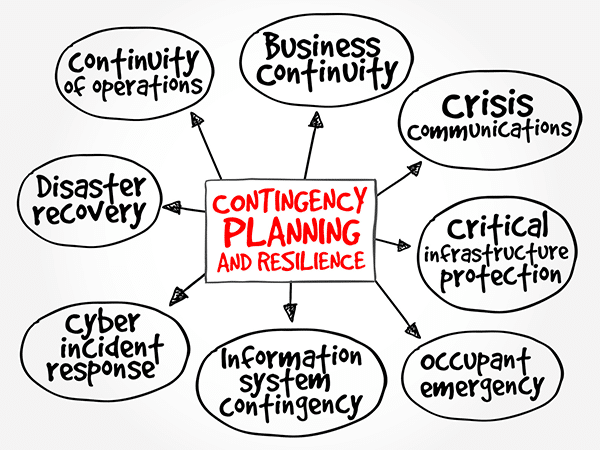
Like this article mentions, a contingency plan is a course of action designed to help an organization respond effectively to a significant future event or situation that may or may not happen.
What does contingency planning cover?
A good contingency plan should include any eventuality that might disrupt business operations.
- events such as natural disasters,
- exceptional employee events such as threats from staff or customers, injuries, and work site accidents,
- departure or disability of a senior manager or discontinuity in senior management,
- strikes or work actions by unions,
- data loss because of technical problems, fires or natural disasters, sabotage or criminal hacking,
- gross management, theft, critical neglect of duty, or accidental destruction of equipment, materials or products,
- product issues such as product recalls, or huge demand orders that require plant relocation or reorganization.
The Contingency Plan:
Writing a complete contingency plan is a significant operation requiring entire staff and management investment. The contingency plan has to be an outline of steps that all are prepared to take and an outline that all are committed to following.
Firstly, you must analyze risks. A list of all possible events that could disrupt operations has to be drawn up. The list should be realistic, and contributions from all departments should be included.
For each item on the list, the likelihood of it occurring should be estimated. Many possibilities are so unlikely that they could reasonably be left out of the plan.
Estimate how much impact each of the disruptive possibilities might have. If a possibility would have minimal or manageable impact, you may not need a unique plan.
For each contingency with a reasonable likelihood of occurring with a significant impact on the organization, work out steps that would protect people, property, and business continuity if that event occurred.
Contingency planning is about likelihood of occurrence and likely impact. Those are the key dimensions that pay a part in your decisions.
4 Corner IT has contingency plans for almost any organization. Our expertise in contingency planning comes from actual experience. Please contact us to learn more.






